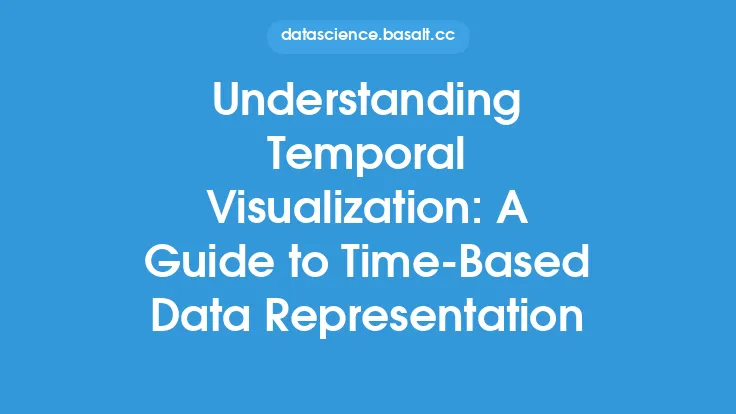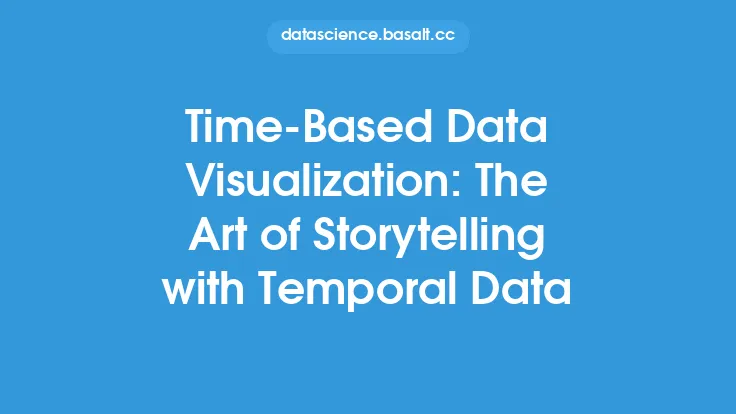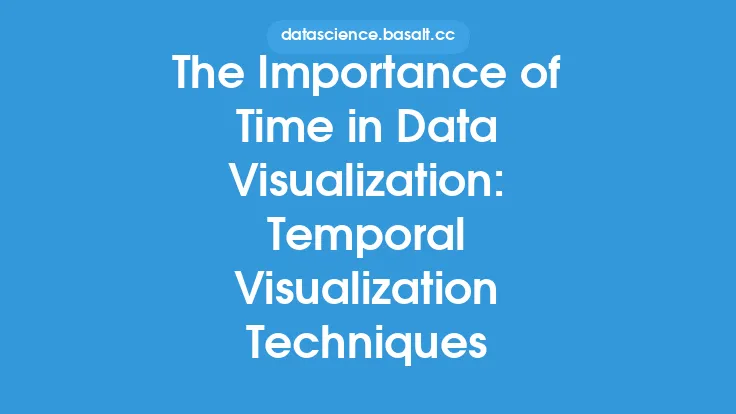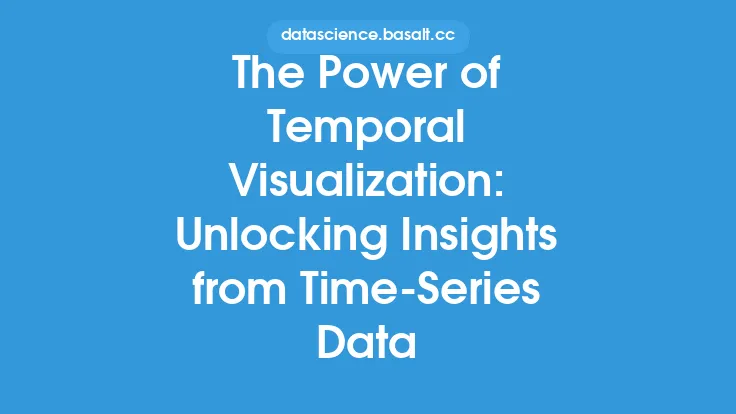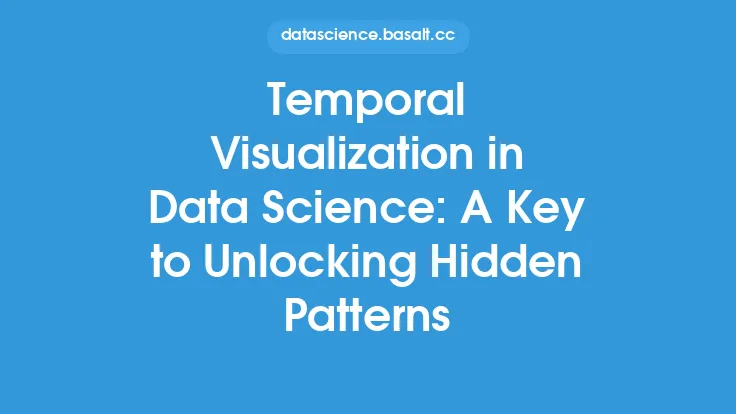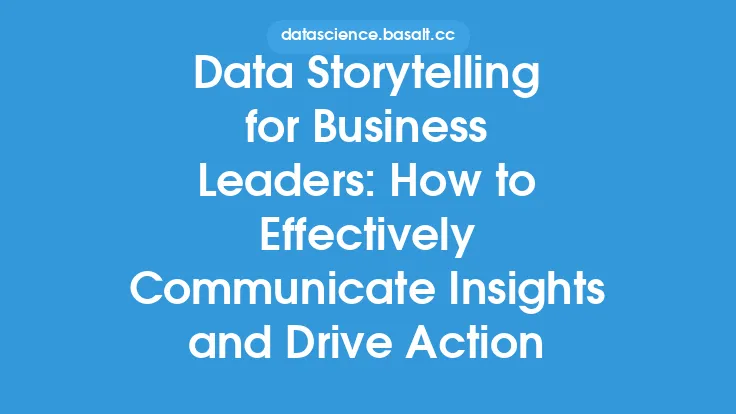When dealing with temporal data, one of the most significant challenges is effectively displaying the information in a way that is easy to understand and interpret. Temporal data, by its very nature, is complex and multifaceted, making it difficult to visualize in a meaningful way. However, with the right techniques and tools, it is possible to create clear and insightful visualizations that reveal the underlying patterns and trends in the data.
Introduction to Temporal Visualization
Temporal visualization refers to the process of creating graphical representations of time-based data. This can include anything from simple line charts showing trends over time to complex interactive visualizations that allow users to explore the data in detail. The key to effective temporal visualization is to find a way to balance the complexity of the data with the need for clarity and simplicity in the visualization. This requires a deep understanding of the data itself, as well as the goals and needs of the audience.
Types of Temporal Data
There are several types of temporal data, each with its own unique characteristics and challenges. These include:
- Time-series data, which consists of a series of data points measured at regular intervals over time. Examples of time-series data include stock prices, weather patterns, and website traffic.
- Event-based data, which consists of a series of discrete events that occur at specific points in time. Examples of event-based data include log files, sensor readings, and social media posts.
- Interval-based data, which consists of a series of intervals or periods of time, such as days, weeks, or months. Examples of interval-based data include calendar data, scheduling data, and financial data.
Visualization Techniques for Temporal Data
There are several visualization techniques that are particularly well-suited for temporal data. These include:
- Line charts, which are useful for showing trends over time.
- Bar charts, which are useful for comparing values at different points in time.
- Scatter plots, which are useful for showing the relationship between two variables over time.
- Heat maps, which are useful for showing patterns and trends in large datasets.
- Interactive visualizations, such as dashboards and storyboards, which allow users to explore the data in detail and create their own visualizations.
Best Practices for Temporal Visualization
When creating temporal visualizations, there are several best practices to keep in mind. These include:
- Keeping the visualization simple and focused on the most important information.
- Using clear and consistent labeling and annotation.
- Providing context and background information to help users understand the data.
- Using interactive elements to allow users to explore the data in detail.
- Testing the visualization with different audiences and refining it based on feedback.
Tools and Technologies for Temporal Visualization
There are several tools and technologies available for creating temporal visualizations. These include:
- Data visualization libraries such as D3.js and Matplotlib.
- Data analysis platforms such as Tableau and Power BI.
- Programming languages such as Python and R.
- Specialized tools such as Gephi and Cytoscape, which are designed specifically for visualizing complex networks and relationships.
Challenges and Limitations of Temporal Visualization
Despite the many benefits of temporal visualization, there are also several challenges and limitations to consider. These include:
- The complexity and volume of the data, which can make it difficult to create clear and insightful visualizations.
- The need to balance the level of detail with the need for simplicity and clarity.
- The potential for bias and distortion in the visualization, which can lead to misinterpretation of the data.
- The need for specialized tools and expertise, which can be a barrier to entry for some users.
Future Directions for Temporal Visualization
As the field of data visualization continues to evolve, there are several future directions for temporal visualization that are worth exploring. These include:
- The use of machine learning and artificial intelligence to create more sophisticated and interactive visualizations.
- The development of new tools and technologies that are specifically designed for temporal visualization.
- The integration of temporal visualization with other forms of data visualization, such as geospatial visualization and network visualization.
- The application of temporal visualization to new and emerging fields, such as the Internet of Things and social media analytics.
Conclusion
Temporal visualization is a powerful tool for understanding and communicating time-based data. By using the right techniques and tools, it is possible to create clear and insightful visualizations that reveal the underlying patterns and trends in the data. However, there are also several challenges and limitations to consider, including the complexity and volume of the data, the need to balance detail with simplicity, and the potential for bias and distortion. As the field of data visualization continues to evolve, it is likely that we will see new and innovative approaches to temporal visualization emerge, and it is exciting to think about the possibilities that these new approaches will bring.
